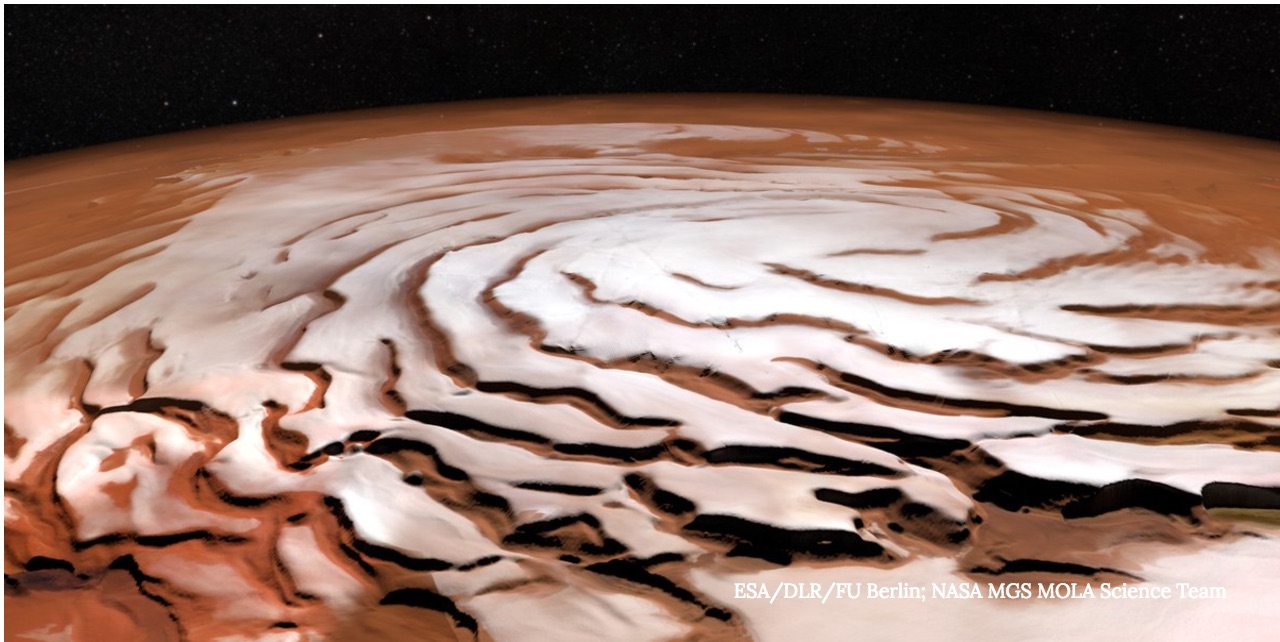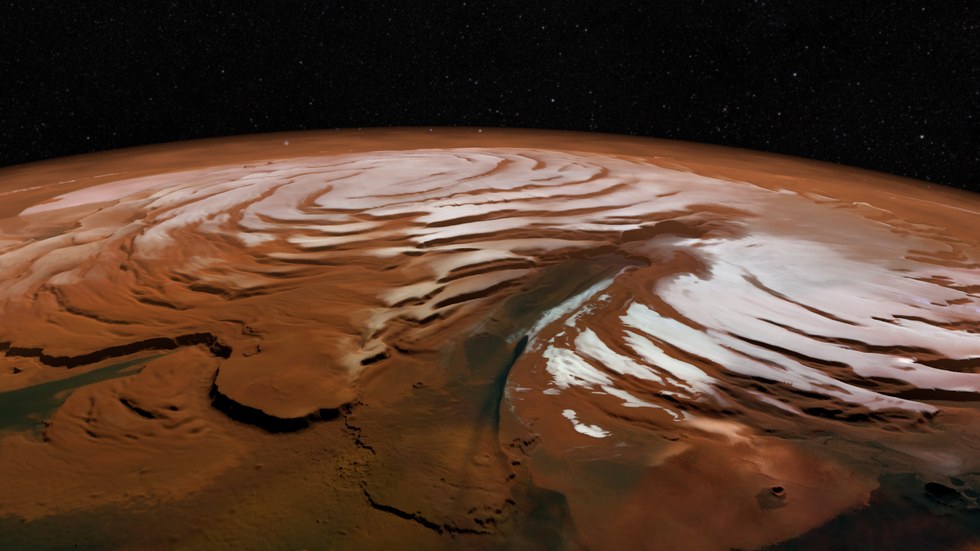Here's What Mars' Amazing Polar Ice Cap Swirls Look Like From Above

This image could be the photographed close-up of a macchiato — foamy bright milk swirling at the top of a cup with the rich undercurrent of aromatic coffee steaming below. In actuality, this is Mars' frozen north pole, created with observational data from the European Space Agency's long-lived orbiter, Mars Express — where swirling ice looks like foam and the ruddy iron oxide-rich dust appears as rich coffee.
Assembled from observations taken during 32 overflights of the north pole between 2004 and 2010 and covering a whopping one million square kilometers, a newly released mosaic (below) highlights the Red Planet's magnificently-structured ice cap that is shaped by climatic cycles and molded by the planet's perpetual winds.
By combining this mosaic with data from the Mars Orbiter Laser Altimeter (MOLA) on board NASA's Mars Global Surveyor spacecraft (which studied Mars from 1997 to 2006), ESA scientists were able to create a "perspective" or "oblique" view of the ice cap, adding depth to the canyons (pictured top). If you looked out of the window from a high-altitude aircraft (or spacecraft in low-Mars orbit) flying over the north pole, this is what you'd see.
RELATED: Spacecraft 'Sees' the Mysteries Buried Under the Polar Ice Caps of Mars
Mars Express is no stranger to Mars' north polar ice cap and the mission has added a wealth of information to our understanding of how the region is shaped.
One major finding after years of study is that the ice cap becomes a key carbon dioxide "sink" during the winter, when it is estimated that 30 percent of Mars' atmospheric CO2 "freezes out," adding a seasonal layer of CO2 ice (commonly known as "dry ice") up to a meter thick. As the northern hemisphere begins to warm up through Martian spring and summer, this CO2 layer sublimates, returning as a gas into the atmosphere, leaving the permanent water ice layers behind.
RELATED: Buried Mars Glaciers are Brimming With Water
Breaking space news, the latest updates on rocket launches, skywatching events and more!
Recent ice cap research has revealed that there are many layers of water ice and dust, providing a record of how Mars' climate has changed over tens of thousands of years as the planet's tilt has precessed. It is thought that the cap's hurricane-like shape is formed by the action of surface winds swirling with the planet's Coriolis force.
In another rendering, the prominent Chasma Boreale is featured — a 500 kilometer (310 mile) long trench that is deeper than the Grand Canyon. This ancient valley cuts deep into ice cap, giving it a two-lobe appearance:
Besides providing invaluable science about Mars' climatic history, perhaps even revealing when the planet may have been habitable for life, these new views of Mars' north pole provide a tantalizing preview of what our future astronauts will see when we finally send a human expedition to the Red Planet.
WATCH VIDEO: Do Space Volcanoes Hold The Key To Alien Life?
Originally published on Seeker.
Ian O'Neill is a media relations specialist at NASA's Jet Propulsion Laboratory (JPL) in Southern California. Prior to joining JPL, he served as editor for the Astronomical Society of the Pacific‘s Mercury magazine and Mercury Online and contributed articles to a number of other publications, including Space.com, Space.com, Live Science, HISTORY.com, Scientific American. Ian holds a Ph.D in solar physics and a master's degree in planetary and space physics.


